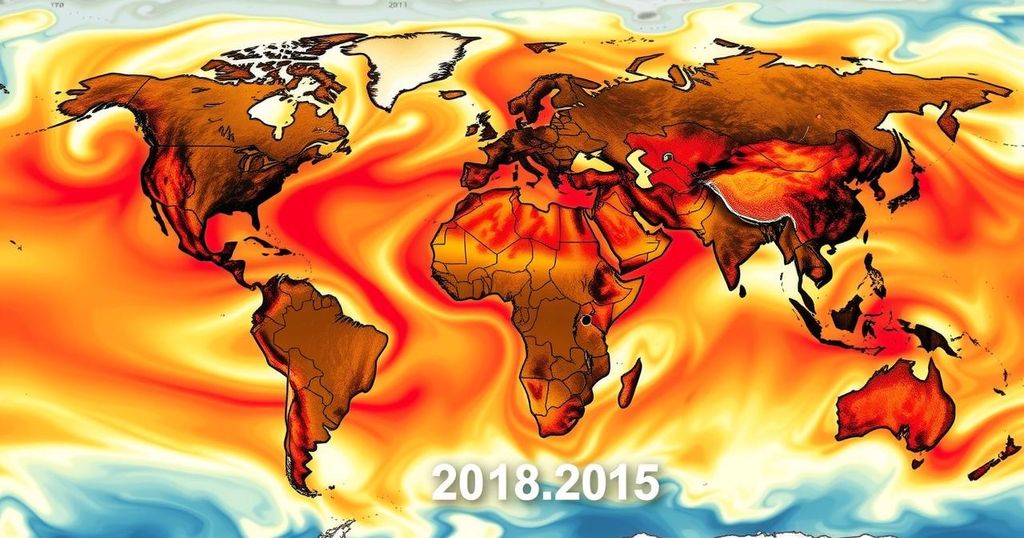2024 Declared Warmest Year on Record with Record Low Antarctic Sea Ice Coverage

Scientists at NOAA have confirmed that 2024 is the warmest year on record, with the average global temperature 2.32 °F (1.29 °C) above 20th-century norms. Antarctic sea ice reached its second-lowest coverage, while ocean heat content hit a record high. Tropical cyclone activity remained near average despite notable historical heat records, emphasizing ongoing climate change.
According to a comprehensive analysis conducted by scientists at NOAA’s National Centers for Environmental Information (NCEI), 2024 has officially been declared the warmest year on record globally. In addition to the unprecedented heat, Antarctic sea ice coverage reached its second-lowest level ever recorded. The following are significant findings from NOAA’s annual global climate report for the year 2024.
In 2024, Earth’s average land and ocean surface temperature exceeded the 20th-century average by 2.32 degrees Fahrenheit (1.29 degrees Celsius), marking the highest temperatures in NOAA’s historical record spanning from 1850 to 2024. Comparatively, this figure surpassed the previous highest temperature of 2023 by 0.18 degrees Fahrenheit (0.10 degrees Celsius). Notably, Africa, Europe, North America, and South America experienced unprecedented heat levels, while Asia and the Arctic recorded their second-warmest years.
Significantly, all ten of the warmest years since 1850 have occurred within the past decade. In 2024, global temperatures exceeded pre-industrial averages (1850-1900) by 2.63 degrees Fahrenheit (1.46 degrees Celsius). Not only did NOAA finalize this record, but other esteemed scientific organizations, including NASA and the UK’s Met Office, reaffirmed these findings through their independent analyses.
Through the lens of climate data, Antarctic sea ice coverage exhibited alarming trends, averaging just 4.00 million square miles in 2024, making it the second lowest on record. The maximum ice extent recorded in September was also at a concerning level, indicating a prolonged pattern of ice loss. In conjunction, Arctic sea ice extent averaged 4.03 million square miles, representing the seventh lowest level noted historically.
Expecting an upswing in oceanic conditions, the upper ocean heat content reached an all-time high in 2024. This measurement reflects the quantity of heat retained in the ocean’s uppermost layers, crucial as oceans absorb approximately 90% of excess heat from climate variations. The past five years have all culminated in record high values for this indicator since tracking began in 1958.
Tropical cyclone activity in 2024 fell within near-average levels, with a total of 85 named storms recorded globally, aligning closely with the long-term average of 88 from 1991 to 2020. The reports outlined the complex nature of climatic impacts, as 42 storms attained tropical cyclone status, with four reaching Category 5 severity on the Saffir-Simpson scale. Beyond storm counts, global accumulated cyclone energy in 2024 was approximately 21% lower than the historical average.
For additional detailed analyses and imagery pertaining to NOAA’s 2024 global climate review, refer to the following sources.
The report reflects a growing concern over climate change, as evidenced by unprecedented temperature levels and alarming reductions in ice coverage in the Antarctic and Arctic regions. Scientists from NOAA utilize extensive historical climate data to monitor and predict environmental changes, contributing to our understanding of climatic trends and their global implications. The continuous rise in global temperatures and shifts in ocean heat content demonstrate the urgent need for effective climate policies and awareness.
In conclusion, the year 2024 stands out as a critical indicator of the intensifying effects of climate change, with record-breaking global temperatures and significant declines in Antarctic sea ice coverage. As climate indicators worsen across the board, the findings call for immediate global attention and action to mitigate further environmental deterioration. Continuous analysis and vigilance by institutions such as NOAA and collaboration among global scientific organizations remain paramount in addressing these pressing climate challenges.
Original Source: www.noaa.gov






